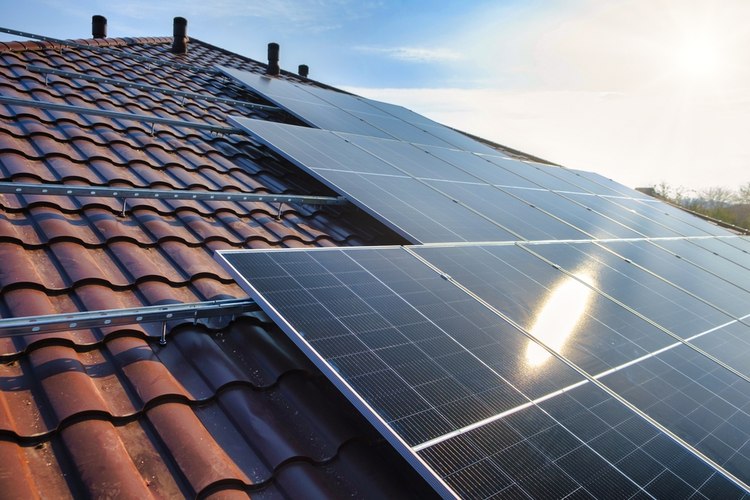How Solar Power Can Reduce Your Energy Costs
Solar power has emerged as a game-changing solution for homeowners and businesses looking to slash their energy bills while embracing sustainable practices. As traditional energy costs continue to rise, solar systems offer a viable alternative that can significantly reduce long-term expenses. This article explores the various ways solar power can help cut energy costs, from immediate savings to long-term financial benefits, and how you can take advantage of available incentives to make the switch to solar more affordable than ever.

How does solar power generate savings on energy bills?
Solar panels harness the sun’s energy and convert it into electricity, reducing your reliance on the grid and lowering your monthly utility bills. When your solar system produces more energy than you consume, excess power is often fed back into the grid, potentially earning you credits through net metering programs. This process can lead to substantial savings, with many homeowners seeing their electricity bills drop by 50% to 90% after installing solar panels.
What are the long-term financial benefits of solar power?
While the initial investment in solar panels may seem significant, the long-term financial benefits are compelling. Solar systems typically have a lifespan of 25-30 years, providing decades of energy savings. As electricity rates continue to climb, your solar savings will likely increase over time. Additionally, solar panels can increase your property value, making them a smart investment for homeowners. Studies have shown that homes with solar systems sell for a premium compared to those without, often recouping a significant portion of the installation costs.
How do solar power tax credits reduce overall costs?
One of the most attractive incentives for going solar is the federal solar investment tax credit (ITC). This program allows you to deduct a percentage of your solar system costs from your federal taxes, significantly lowering the overall expense. As of 2023, the federal solar tax credit stands at 30% of the total system cost, with no upper limit. This means that for a $20,000 solar installation, you could potentially receive a $6,000 tax credit, making the transition to solar power much more affordable.
What state and local solar incentives are available?
In addition to federal tax credits, many states and local municipalities offer their own incentives to encourage solar adoption. These can include:
-
State tax credits: Similar to the federal ITC, some states offer additional tax credits for solar installations.
-
Solar renewable energy certificates (SRECs): In certain states, you can earn and sell SRECs for the energy your system produces.
-
Performance-based incentives: Some utilities pay you a premium for the solar electricity your system generates.
-
Property tax exemptions: Many areas exempt the added value of solar systems from property tax assessments.
-
Sales tax exemptions: Some states waive sales tax on solar equipment purchases.
These incentives can vary widely by location, so it’s essential to research what’s available in your area to maximize your savings.
How do solar panel costs compare to traditional energy sources?
When considering the switch to solar, it’s crucial to compare the costs with traditional energy sources. While the upfront investment for solar panels may be higher, the long-term savings often outweigh the initial expense. Let’s look at a cost comparison:
| Energy Source | Initial Cost | Annual Operating Cost | 20-Year Cost Estimate |
|---|---|---|---|
| Solar Panels | $15,000-$25,000 | $0-$200 | $15,000-$29,000 |
| Grid Electricity | $0 | $1,500-$2,500 | $30,000-$50,000 |
Prices, rates, or cost estimates mentioned in this article are based on the latest available information but may change over time. Independent research is advised before making financial decisions.
As the table illustrates, while solar panels have a higher upfront cost, their minimal operating expenses and long lifespan result in significant savings over time compared to relying solely on grid electricity.
What strategies can maximize solar power savings?
To get the most out of your solar investment and maximize your energy cost savings, consider these strategies:
-
Conduct an energy audit to identify areas where you can reduce consumption before installing solar panels.
-
Size your solar system appropriately to meet your energy needs without overproducing.
-
Consider adding battery storage to utilize excess energy during non-sunlight hours or grid outages.
-
Regularly maintain and clean your solar panels to ensure optimal performance.
-
Take advantage of time-of-use rates if offered by your utility, using solar power during peak hours when electricity is most expensive.
-
Explore community solar options if rooftop installation isn’t feasible for your property.
By implementing these strategies and taking full advantage of available incentives, you can significantly reduce your energy costs with solar power. As technology continues to improve and costs decrease, solar energy is becoming an increasingly attractive option for those looking to save money and reduce their environmental impact.
The shared information of this article is up-to-date as of the publishing date. For more up-to-date information, please conduct your own research.




